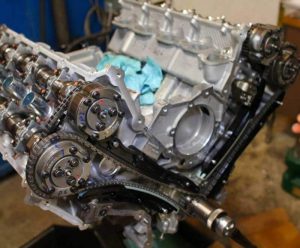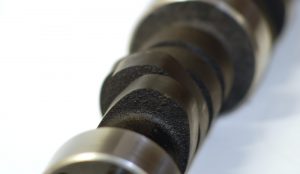While sitting in my hotel on vacation I noticed a hotrod in the hotel parking lot. When the owner got into this supreme machine he gunned the engine a few times and it made my heart skip a few beats. I love cars and I know this blog is dedicated to hotel and travel news, but I’m sure there are some traveling lovers who also love cars, engines and everything automobile related, so this article is dedicated to the camshaft.
A camshaft is a very vital component of a vehicle engine. Controlling the opening and closing processes of the valves; it influences the emissions, fuel economy, and engine performance substantially. In other words, camshafts regulate the air and fuel flow into and out of the engine to make a strong impact on the overall performance. So, a camshaft plays a very critical role in keeping the engine optimally functional.
Components of a Camshaft
As the name suggests, the cams and the shaft are the main components of a camshaft. Cams refer to egg-shaped lobes. With the help of the lobes or cams, the camshafts push against the exhaust and intake valves to open as they rotate. The shafts spin once with every four-stroke cycle of the engine. The valves are brought back to the closed position by the springs on the valve.
Fixed camshafts make a negative impact on engine efficiency
A fixed camshaft is an ideal choice only at one engine speed. As the engine speed changes, the performance deteriorates considerably. That is to say, the engine turns incompetent to perform to its full potential when there is a change in the engine speed. To overcome this limitation, the vehicle manufacturers have developed techniques to vary the cam profile as the speed of the engine changes.
Different camshaft configurations
You can find many different arrangements of camshafts on engines. The most common configurations are:
– Pushrod
Single Overhead Cam
Single overhead cam refers to an engine with one cam per head. For all vehicles with an inline 4-cylinder or 6-cylinder engine, you can find only one cam. There are two cams for all V-6 or V-8 engines. What does it mean? Single overhead cam refers to one cam per head.

Double Overhead Cam
This type of engine comes with two cams per head. So V engines and inline engines have 4 and 2 cams respectively. Double overhead cams are highly suitable on vehicle engines with four or more valves per cylinder.
Pushrod Engines
What makes pushrod engines different? The camshafts on pushrod engines are located inside the engine instead of being housed in the head. A short chain or gears drive the camshafts in pushrod engines.
Types of Camshafts
You can find two types of camshafts nowadays, namely:

Flat Tappets
Featuring a flat bottom on the lifters; flat tappets are widely used in racing engines. Compared to roller cams, these camshafts are less expensive.
Roller Cams
Equipped with fatter lobes; roller cams are the popular choice for all modern vehicles. You can find a rolling cylinder at the end of these camshafts. Though roller cams are more expensive, you can expect reduced friction and higher reliability.
You can also find a sensor on the camshafts of all modern vehicles. Monitoring the shaft rotation; the sensor takes note of the valve opening and closure timings. This information is transferred to the Engine Control Unit (ECU) of the vehicle. These details are highly beneficial to fine-tune the injector pulse and spark timing.


